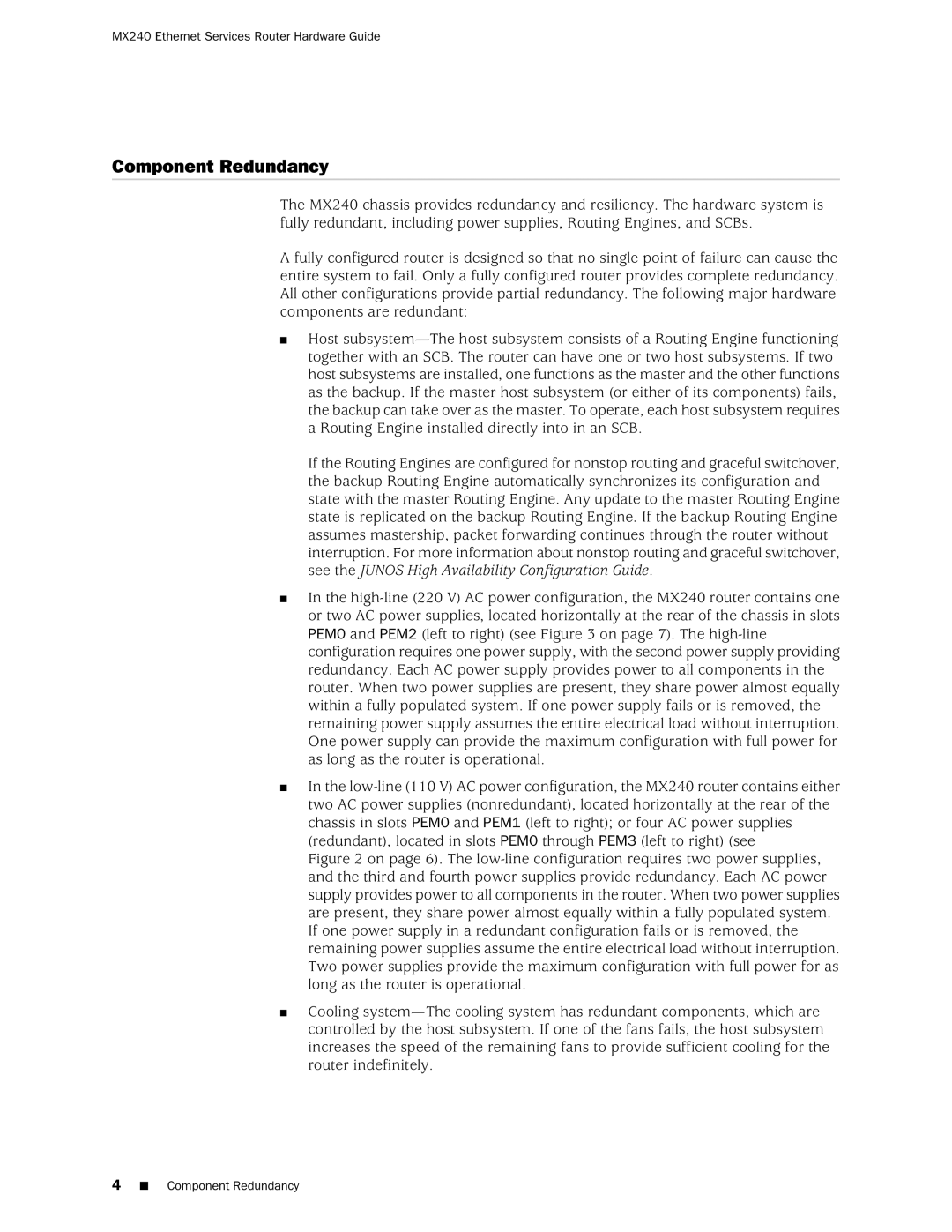MX240 Ethernet Services Router Hardware Guide
Component Redundancy
The MX240 chassis provides redundancy and resiliency. The hardware system is fully redundant, including power supplies, Routing Engines, and SCBs.
A fully configured router is designed so that no single point of failure can cause the entire system to fail. Only a fully configured router provides complete redundancy. All other configurations provide partial redundancy. The following major hardware components are redundant:
■Host
If the Routing Engines are configured for nonstop routing and graceful switchover, the backup Routing Engine automatically synchronizes its configuration and state with the master Routing Engine. Any update to the master Routing Engine state is replicated on the backup Routing Engine. If the backup Routing Engine assumes mastership, packet forwarding continues through the router without interruption. For more information about nonstop routing and graceful switchover, see the JUNOS High Availability Configuration Guide.
■In the
■In the
Figure 2 on page 6). The low-line configuration requires two power supplies, and the third and fourth power supplies provide redundancy. Each AC power supply provides power to all components in the router. When two power supplies are present, they share power almost equally within a fully populated system. If one power supply in a redundant configuration fails or is removed, the remaining power supplies assume the entire electrical load without interruption. Two power supplies provide the maximum configuration with full power for as long as the router is operational.
■Cooling system—The cooling system has redundant components, which are controlled by the host subsystem. If one of the fans fails, the host subsystem increases the speed of the remaining fans to provide sufficient cooling for the router indefinitely.
4■ Component Redundancy
